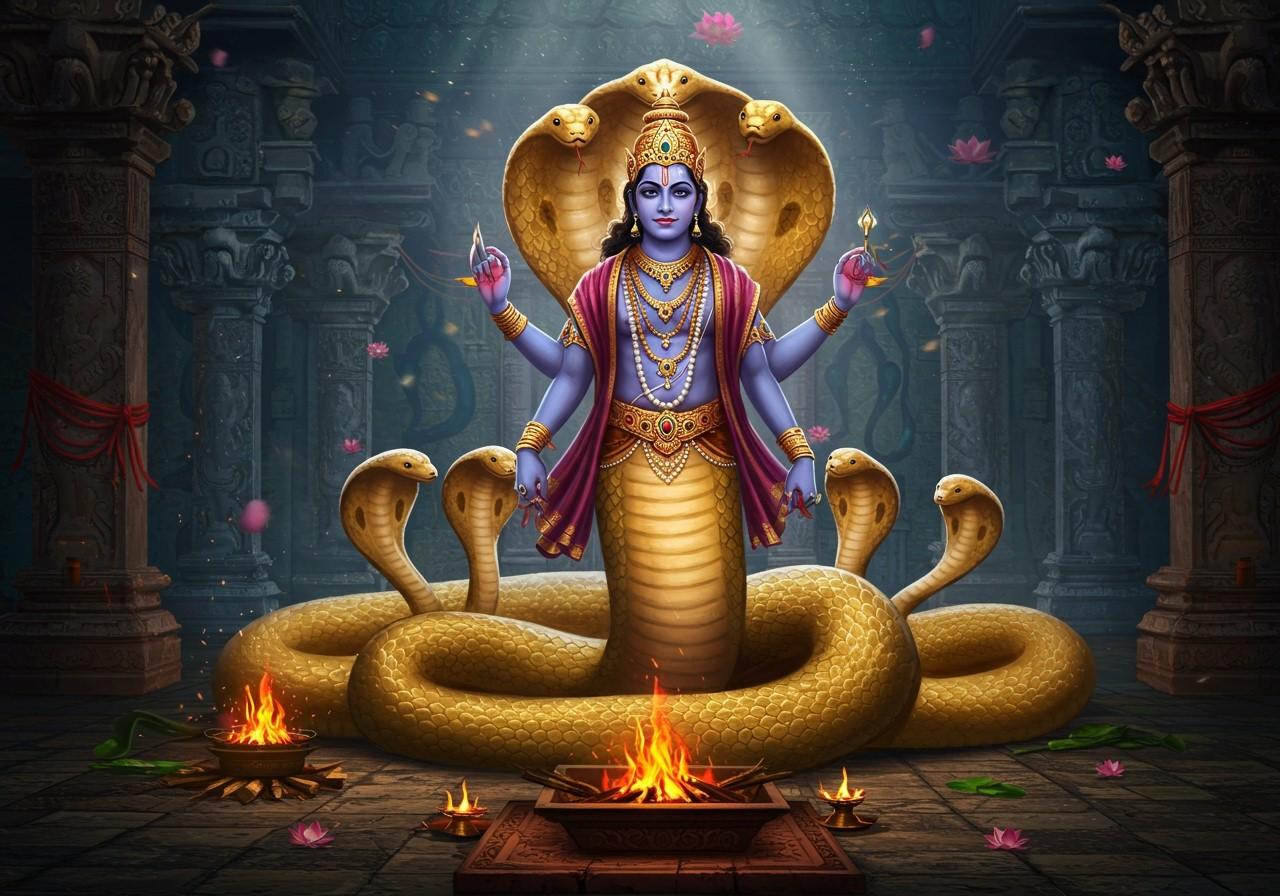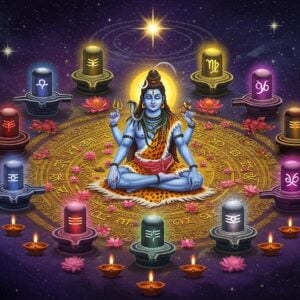
Astika, a prominent figure in Hindu mythology, is revered as both a serpent king and a savior. His story, deeply embedded within the Mahabharata, highlights themes of wisdom, compassion, and the delicate balance between humans and the serpent world. At poojn.in, India’s largest store for cultural goods and services, we understand the significance of these narratives and offer a wide selection of products for your spiritual needs.
Who is Astika in the Mahabharata?
Astika’s lineage is central to his story. Born to the sage Jaratkaru and the serpent goddess Manasa, he embodies a bridge between the human and serpent realms. This unique heritage plays a crucial role in the Sarpa Satra, a ritual initiated by King Janamejaya to eradicate all serpents. Astika’s intervention, fueled by wisdom and eloquence, saves the serpent race from annihilation, demonstrating the power of peaceful resolution and understanding. Explore our collection of sacred threads and malas at poojn.in to enhance your spiritual practices.
Astika’s Connection to Serpents
In Hindu mythology, serpents hold a dual nature, symbolizing both auspiciousness and potential danger. Astika embodies the positive attributes of serpents, representing protection, fertility, and a divine link to deities like Lord Shiva, who is often depicted with Vasuki, the serpent king, coiled around his neck. Astika’s role as savior reinforces the reverence for Nagas, serpent beings, highlighting their cultural and religious importance in Hindu traditions. Discover our exquisite range of copper serpent idols at poojn.in, perfect for honoring these powerful beings. For those seeking deeper understanding, explore our devotee’s guide to Maa Manasa, another prominent serpent deity.
Astika’s Divine Status
In certain regions, Astika transcends his mortal origins and is venerated as a divine being. He represents wisdom, protection, and the triumph of peace over conflict. Festivals such as Nag Panchami honor serpent deities, including Astika, further solidifying his cultural significance. Artistic depictions often portray him with divine attributes, reflecting his elevated status. This duality, encompassing both human and divine aspects, mirrors broader themes within Hindu mythology, positioning Astika as a bridge between realms, embodying harmony and understanding. Poojn.in offers a diverse selection of Maa Manasa murtis and other divine idols for your personal altar.
Serpent Kings in Hindu Mythology
Astika’s narrative resonates with the broader context of serpent kings in Hindu mythology. These powerful figures, known as Nagas or Nagarajas, are associated with strength, wisdom, protection, and sacrifice. Vasuki, a prominent serpent king, is often depicted adorned with the Nagamani gem and coiled around Lord Shiva. He played a vital role in the Samudra Manthan, the churning of the cosmic ocean. Shesha, another revered serpent king and the elder brother of Vasuki, serves as the divine couch upon which Lord Vishnu rests. Delve deeper into the stories of Lord Vishnu and Lord Indra on poojn.in.
The Significance of Nagas
Nagas, supernatural serpents capable of assuming human form, are deeply connected to water, fertility, and the life-giving forces of nature. They are generally regarded as benevolent protectors and guardians of treasures and hidden knowledge. The three coils of a serpent often symbolize the cyclical nature of time – past, present, and future – emphasizing their timeless wisdom. Nagas embody justice and are revered in various cultural and religious practices. Find a wide variety of Shiva lingams at poojn.in to honor Lord Shiva and his connection to the serpent king Vasuki.
Astika’s Enduring Legacy
Astika’s story, interwoven with the rich tapestry of serpent lore, emphasizes the intricate balance between humanity and the natural world within Hindu mythology. It invites exploration of themes of harmony, protection, and wisdom, deeply embedded within India’s cultural heritage. You can find numerous resources and products related to Hindu mythology and rituals at poojn.in.

